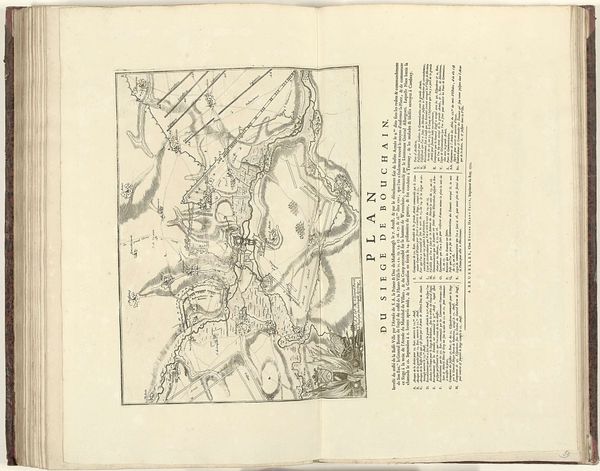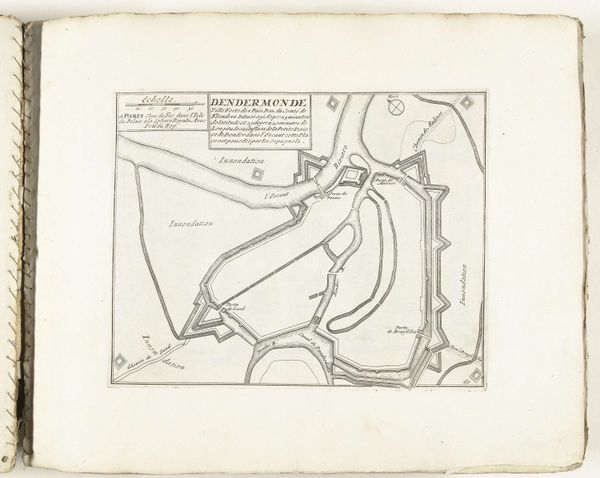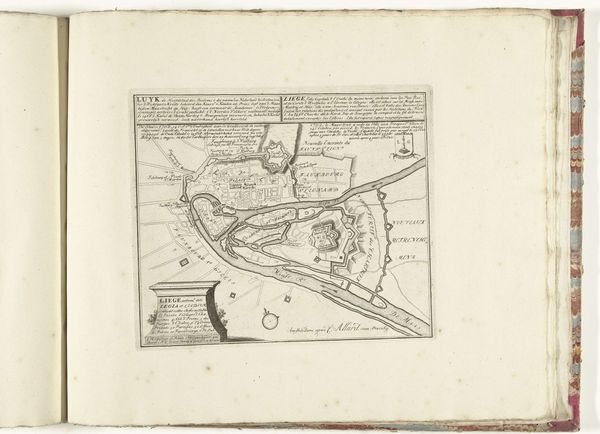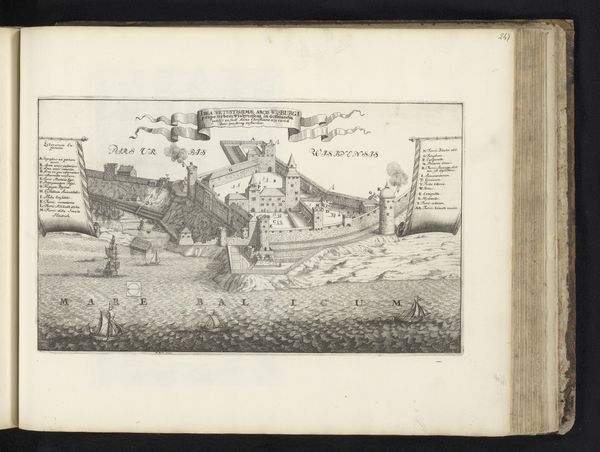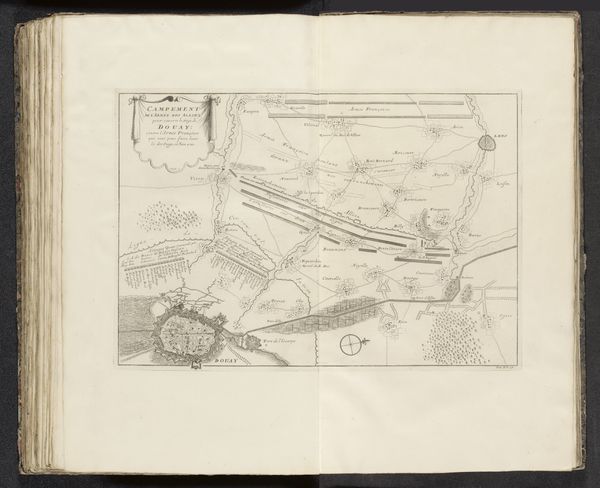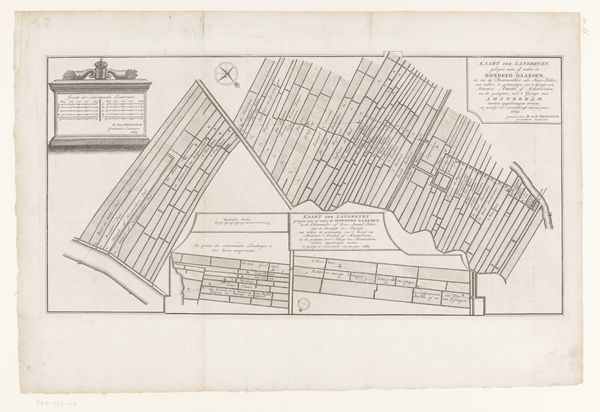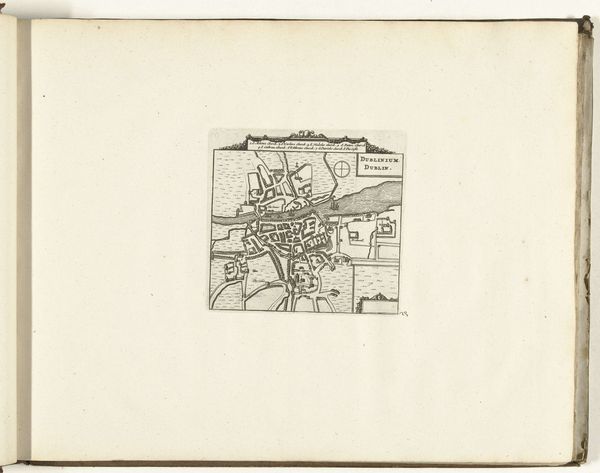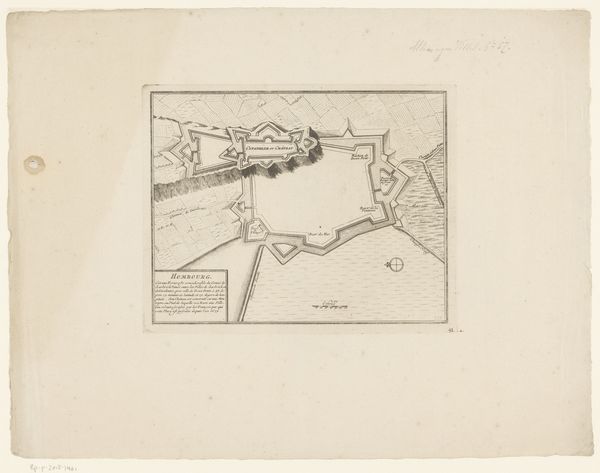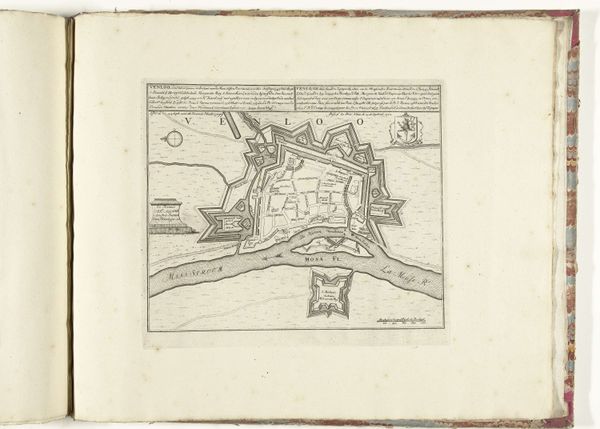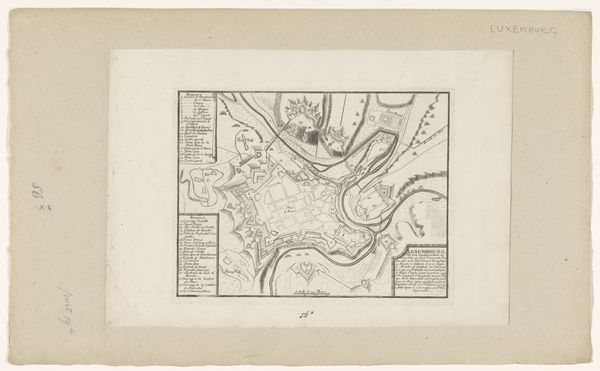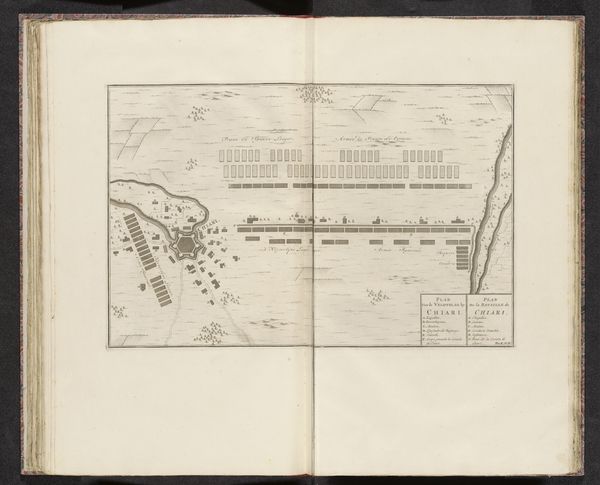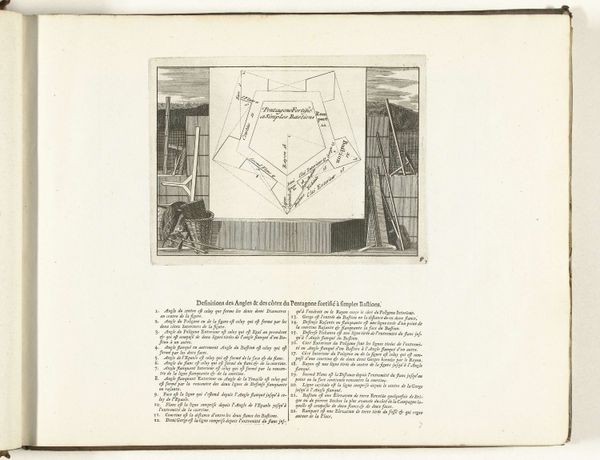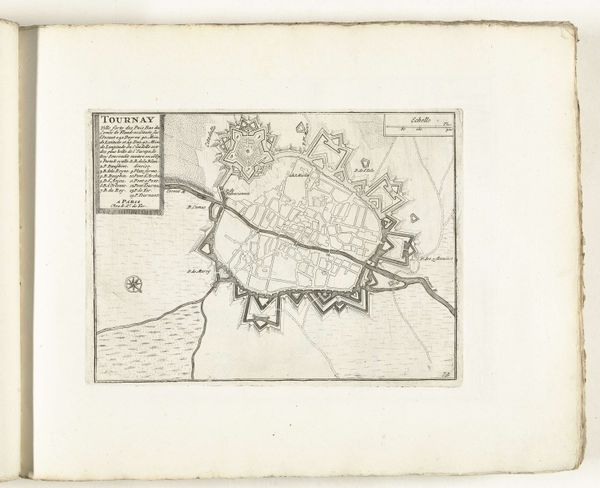
print, engraving
#
baroque
# print
#
line
#
cityscape
#
history-painting
#
engraving
Dimensions: height 180 mm, width 277 mm
Copyright: Rijks Museum: Open Domain
Curator: This anonymous print, dating from around 1702 and currently held at the Rijksmuseum, is titled "Plaat over loopgraven bij een bastion." Editor: My initial reaction is how intricate the lines are. The whole thing feels very controlled and measured, almost unsettlingly precise, like looking at a blueprint for war. Curator: Precisely. It's an engraving, so that sharp, clean line work is inherent to the medium. It depicts a city during what was likely a siege. Notice how the visual language normalizes and even aestheticizes the violence. We see these stark geometric shapes tracing out lines of battle and trenches, and it's all quite devoid of human presence except as represented as pawns in strategic play. Editor: So, what’s the history that informs the artist’s choices here? The piece looks objective to the events displayed within its structure. Curator: The "objectivity," if we can call it that, would certainly have served political ends. Prints such as these played a role in shaping public opinion and informing those at court of strategic and tactical developments during military engagements. We should be aware that there’s a subtle interplay between representation and reality. It offers an ideal, a design to be implemented; however, the messy realities of conflict introduce contingency and blur the neat divisions we find here. Editor: That point makes me think: is the "lack" of explicit, gruesome battle part of the point? The piece becomes propaganda due to this design as the actual war, one filled with turmoil, loss, and violence, seems far away from the clean execution represented within this piece. Curator: In line with this view of its political function, it’s important to examine the relationship of text and image. It’s interesting to observe that at least half the image plane is consumed by text in contrast to the graphic space illustrating the city at war. Here the graphic image plays an assistive role. Editor: So interesting! I think this dialogue highlighted just how crucial it is to remember that even seemingly objective depictions like this one are so enmeshed within and contribute to shaping a narrative within the period. Curator: I wholeheartedly agree. There are subtle visual cues throughout that indicate its complex ideological function in its era. This provides an excellent entry point for considering its position in society, especially given the piece's stark contrasts between form and implication.
Comments
No comments
Be the first to comment and join the conversation on the ultimate creative platform.
